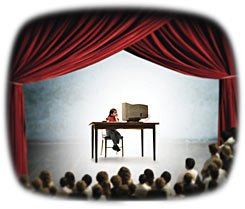All the World’s a Stage: Teaching Through Online Journals
Blogs aren’t just for techheads and political cranks. They’re opening up classrooms, too.

In the last few years, blogs have turned the political and technological world upside down. Now, they're turning the classroom inside out.
Blogs, short for "Web logs," are personal online journals; millions exist, ranging from sophisticated legitimate news sources to tedious (and often abandoned) digital scribble. They're cheap -- you can start a basic one free or pay up to $40 a month for special features -- and they give an audience to individual reflection and experience. They're also giving classrooms a new way to face the world.
A teacher might maintain a blog to post and offer thoughts on each day's work for the classroom -- a boon to parents who want to keep up and to students who need to catch up. A blog might even contain an entire year's assignments, handouts, and supplemental materials, but as one veteran of the technology, Will Richardson, cautions, "Start small, maybe just with posting homework assignments."
Richardson, a self-avowed "blogvangelist" who's the supervisor of instructional technology and communications at Hunterdon Central Regional High School in Flemington, New Jersey (and a member of The George Lucas Educational Foundation's National Advisory Council), also used the blog format to give his students an outside audience. When he taught journalism and English to eleventh and twelfth graders a few years ago, he had them use their blogs to mentor a group of fourth and fifth graders in Georgia.
The grade schoolers "were scared, at first, that their writing wouldn't be good enough for the older kids," says teacher Anne Davis, who worked with those fourth- and fifth-grade students at J.H. House Elementary School, in Conyers, Georgia. "Having an outside audience really made a difference to them. They couldn't believe that someone else would care what they wrote."
To help create a crowd for her young bloggers, Davis also recruited senior citizens and local parents to comment on the student postings. And this year, Pat Street, author of a book that some of Davis's charges use in class, will comment on their posts as well.
Just telling kids to blog, however, doesn't work. Davis has her students troll through a list of current-event links to pick topics, and she encourages them to choose different subject areas from week to week. Davis also helps them develop as an audience by giving them comment starters like, "I wonder why ..." or "Another thing to consider is ..." Unwanted spectators like spammers can be avoided by using blog programs that require a log-in, and security concerns can be alleviated by making sure the students use only their first names or a handle.
"It's is an easy, inexpensive technology," says Richardson. "But it can really change what you do with your curriculum."